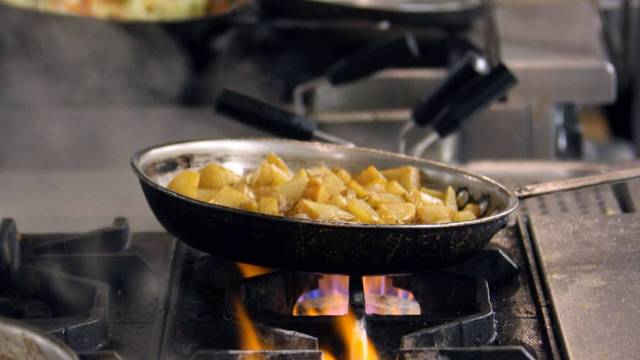Savor Genuine Asian Food With a Pan-Asian Spin for a Culinary Journey
Beginning on a culinary journey with authentic Oriental cuisine, enhanced with a Pan-Asian twist, uses a special opportunity to discover the abundant tapestry of flavors that specify the region's varied culinary traditions. As you contemplate these attracting dishes, take into consideration the cultural stories and historical impacts that shape them, each bite offering a story waiting to be discovered. Chinese food Islamabad.

Checking Out Pan-Asian Tastes
In the realm of international gastronomy, Pan-Asian food stands apart for its impressive diversity and the harmonious interplay of tastes from numerous Eastern cultures. This cooking strategy celebrates the distinct components and abundant practices discovered across the continent, developing a tapestry of preferences that is both fascinating and rewarding. Key to Pan-Asian cuisine is its ability to stabilize different tastes-- pleasant, salted, spicy, and sour-- while highlighting the freshness and high quality of each ingredient.
From the umami-rich soy sauce of Japan to the fiery chili peppers of Thailand, Pan-Asian cuisine provides a substantial scheme of flavors. These components are typically combined in creative methods, boosting dishes with layers of complexity. For circumstances, the use of great smelling natural herbs such as lemongrass and cilantro, usual in Vietnamese and Thai food, includes a rejuvenating illumination to dishes, while the consolidation of coconut milk provides a velvety, abundant structure.
The emphasis on fresh produce and fragrant flavors makes certain that each dish is not only a banquet for the taste yet additionally for the detects. Pan-Asian cuisine welcomes restaurants to begin on a culinary journey, discovering the substantial and differed landscapes of Eastern gastronomy with every bite.
Blend Recipes to Try
While Pan-Asian cuisine is commemorated for its conventional tastes, the contemporary cooking landscape is increasingly welcoming fusion meals that blend these traditional components with impacts from other areas. This ingenious approach not only honors the abundant heritage of Eastern cookeries but likewise presents unique preference experiences that attract contemporary tastes buds.
A prime example of such a combination recipe is the Korean-Mexican taco, where marinaded bulgogi beef is covered in a warm tortilla, topped with kimchi and a hot gochujang-infused salsa. This mix marries the bold, full-flavored tastes of Korea with the vibrant, fresh aspects of Mexican food. In a similar way, sushi burritos have actually gained appeal, amalgamating the delicate virtuosity of Japanese sushi with the hearty, hand-held comfort of a burrito, usually featuring fusion ingredients like tempura shrimp and avocado with a drizzle of wasabi mayo.
Another noteworthy dish is Thai curry ramen, which instills the luscious, fragrant spices of Thai curry right into the reassuring brew of conventional Japanese ramen, developing a harmonious blend that tantalizes the senses. These blend recipes prolong past simple novelty; they stand for a cooking discussion between societies, motivating expedition and technology in the globe of Pan-Asian food.
Vital Components and Flavors
To absolutely appreciate Pan-Asian food, one should comprehend the vital components and flavors that create its structure. This diverse culinary style draws from a rich tapestry of Asian traditions, employing an unified blend of structures and tastes.
Aromatic elements are critical, with ginger, garlic, and lemongrass being common throughout different Pan-Asian recipes. These ingredients offer a great smelling base that enhances the intricacy of flavors. Spices such as celebrity anise, cardamom, and cinnamon present heat and personality, echoing influences from areas like China and India.

Cooking Techniques and Tips
Grasping the art of Pan-Asian food calls for familiarity with its unique food preparation techniques, each adding to the dynamic tapestry of tastes this culinary tradition is commemorated for. Central to these methods is the stir-fry, a rapid food preparation strategy that protects the nutritional integrity and vibrant colors of active ingredients. Making use of a wok, the stir-fry technique permits also heat circulation, vital for achieving the characteristic texture and flavor equilibrium of Pan-Asian meals.
Another basic method is steaming, especially common in Chinese cuisine. This mild method preserves the all-natural flavors and nutrients of components, making it optimal for seafood and veggies. Dumplings, a beloved staple, frequently benefit from steaming, causing soft, delicious textures.
Cooking, additionally essential, presents smoky depths to dishes such as Korean bulgogi or Japanese yakitori (pan asian restaurant Islamabad). This strategy usually includes seasoning components, permitting tastes to penetrate deeply prior to food preparation over an open flame or warm plate
Finally, understanding the art of stabilizing flavors-- pleasant, sour, salted, bitter, and umami-- is crucial. Appropriately layering these elements can raise a meal from common to phenomenal, supplying a facility and pleasing cooking experience that embodies the essence of Pan-Asian cuisine.
Dining Experiences Worldwide
Throughout the globe, Pan-Asian cuisine offers an unparalleled dining experience, celebrated for its rich tapestry of flavors and dynamic discussions. This cooking phenomenon has transcended social boundaries, capturing the hearts and tastes buds of food enthusiasts worldwide. In worldwide best asian restaurant Islamabad cities fresh York, London, and Sydney, Pan-Asian restaurants function as fusions where culinary practices from Thailand, Japan, China, and beyond merge, offering diners with an eclectic mix of dishes that highlight the region's diversity.
The international appeal of Pan-Asian food exists in its ability to offer both authenticity and innovation. Cooks masterfully marry standard components such as lemongrass, soy sauce, and miso with modern methods, leading to meals that are both acquainted and refreshingly brand-new. This combination allows diners to begin on a culinary journey that values heritage while welcoming modernity.
Additionally, dining experiences are boosted through thoughtfully made settings that show the values of Pan-Asian aesthetics. From minimal Japanese-inspired insides to dynamic Thai-themed rooms, each dining establishment uses a distinct ambiance that enhances the culinary offerings. Consequently, customers are not merely eating a meal but partaking in a social experience, making Pan-Asian eating a genuinely global sensation.
Final Thought
The exploration of Pan-Asian food supplies a profound understanding of the intricate interaction of flavors and culinary traditions throughout Asia. By accepting blend meals such as Thai curry ramen and sushi burritos, the culinary trip not only highlights the flexibility of typical active ingredients however likewise showcases cutting-edge modern-day strategies. This gastronomic experience, enriched by cooking techniques and important seasonings, offers an unique chance to appreciate the multiculturalism and culinary virtuosity that define Pan-Asian cuisine on an international range.
Embarking on a culinary trip via authentic Asian cuisine, improved with a Pan-Asian spin, provides an one-of-a-kind chance to explore the rich tapestry of tastes that specify the area's diverse cooking traditions.In the realm of worldwide gastronomy, Pan-Asian food stands out for its remarkable diversity and the unified interplay of flavors from different Eastern societies. Key to Pan-Asian cuisine is its capacity to balance contrasting flavors-- wonderful, salted, spicy, and sour-- while highlighting the freshness and high quality of each active ingredient.
